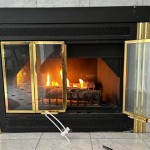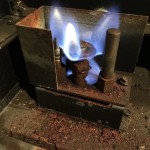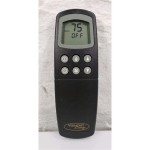Cleaning Inside Fireplace Walls: A Comprehensive Guide
Maintaining a fireplace involves more than just ensuring a clean hearth and chimney. The interior walls of the fireplace, also known as the firebox, accumulate soot, creosote, and ash over time, impacting its efficiency and potentially posing safety hazards. Regular cleaning is crucial for optimal performance, preventing chimney fires, and preserving the aesthetic appeal of the fireplace. This article provides a detailed guide on how to effectively clean the inside walls of a fireplace.
Before commencing the cleaning process, it is imperative to prioritize safety precautions. Gather necessary protective gear, including safety glasses, gloves, and a dust mask or respirator. These items will protect the eyes, skin, and respiratory system from the irritants present in soot and ash. Adequate ventilation is also essential. Open windows and doors to ensure a proper airflow throughout the room, minimizing the inhalation of airborne particles. It's advisable to cover nearby furniture and flooring with drop cloths or old sheets to prevent staining and damage from falling debris.
The frequency of cleaning depends on the usage of the fireplace. For fireplaces used regularly throughout the heating season, cleaning should ideally be performed at least once a year, typically before the start of the cold months. If the fireplace is used only occasionally, cleaning every other year might suffice. However, if there is visible buildup of creosote or soot, regardless of usage frequency, cleaning should be undertaken promptly. A buildup of creosote, in particular, is a significant fire hazard and should never be ignored.
Preparing for the Cleaning Process
Before physically cleaning the firebox, removal of all debris is the first step. Allow the fireplace to cool completely before proceeding. This is crucial to prevent burns and ensure comfortable working conditions. Using a shovel or appropriate tool, remove all remaining ash and partially burned wood from the firebox. Dispose of the ash in a metal container with a tight-fitting lid. Never use a plastic container, as hot embers can remain in the ash for several days and could melt or ignite the plastic, causing a fire. Once the bulk of the debris is removed, use a stiff brush or vacuum cleaner with a hose attachment to remove loose soot and ash from the walls and floor of the firebox.
Following the initial debris removal, a thorough inspection of the fireplace walls is necessary. Look for any cracks, loose bricks, or damaged mortar. These issues should be addressed by a qualified professional before using the fireplace again. Ignoring these problems could lead to structural damage to the fireplace and chimney, potentially creating a safety hazard. Also, inspect the damper to ensure it opens and closes smoothly and seals properly. A malfunctioning damper can significantly reduce the efficiency of the fireplace and allow cold air to enter the house when the fireplace is not in use.
The type of cleaning solution used impacts its effectiveness. Several options can be used, including commercially available fireplace cleaners and homemade solutions. Commercial fireplace cleaners are specifically formulated to dissolve soot and creosote. They generally come in spray or liquid forms and are available at most hardware stores and home improvement centers. When using a commercial cleaner, follow the manufacturer's instructions carefully. Wear appropriate protective gear, as some cleaners can be harsh on the skin and respiratory system. A homemade solution can be created using a mixture of warm water and mild dish soap. This is a gentler option that is effective for removing light soot and grime. However, it may not be as effective at removing heavy creosote buildup.
Cleaning Techniques and Best Practices
Application of the chosen cleaning solution is a crucial step. For commercial cleaners, spray the solution directly onto the fireplace walls, following the manufacturer's instructions. Allow the solution to sit for the recommended amount of time, typically a few minutes, to allow it to penetrate the soot and creosote. For a homemade solution, apply the mixture to the walls using a sponge or cloth. Ensure that the entire surface is covered evenly. Avoid using excessive amounts of water, as this can saturate the brick and mortar, potentially leading to damage over time.
Scrubbing the fireplace walls is essential for removing stubborn soot and creosote. Use a stiff brush or scrub brush to scrub the walls thoroughly. Pay particular attention to areas with heavy buildup. For especially stubborn stains, consider using a pumice stone or a wire brush. However, exercise caution when using these abrasive tools, as they can scratch or damage the brick and mortar if applied too forcefully. Work in small sections, scrubbing each area until the soot and creosote are loosened. Rinse the brush frequently with clean water to remove accumulated soot and grime.
Rinsing the fireplace walls removes the cleaning solution and dislodged soot and creosote. Use a clean sponge or cloth dampened with clean water to wipe down the walls thoroughly. Rinse the sponge or cloth frequently to prevent spreading the soot and grime. Repeat this process until all traces of the cleaning solution and soot are removed. For areas that are difficult to reach, consider using a spray bottle filled with clean water to rinse the walls. After rinsing, allow the fireplace walls to dry completely before using the fireplace again. This will help prevent the buildup of moisture, which can lead to damage over time.
Addressing Specific Cleaning Challenges
Creosote buildup presents a significant challenge. Creosote is a tar-like substance that accumulates in the fireplace and chimney as a byproduct of burning wood. It is highly flammable and can cause chimney fires. Heavy creosote buildup may require the assistance of a professional chimney sweep. However, for lighter buildup, scrubbing with a stiff brush and a commercial creosote remover may be sufficient. Regular chimney inspections and cleanings by a qualified professional are essential to prevent dangerous creosote accumulation.
Stain removal is another common challenge. Stubborn stains can remain on the fireplace walls even after thorough cleaning. Several methods can be used to remove these stains. A paste made from baking soda and water can be applied to the stains and left to sit for several hours before being scrubbed off. A solution of vinegar and water can also be effective for removing stains. For more persistent stains, a commercial stain remover specifically designed for fireplaces may be necessary. Be sure to follow the manufacturer's instructions carefully and test the remover on a small, inconspicuous area first to ensure that it does not damage the brick or mortar.
Preventing future buildup is paramount. Several steps can be taken to minimize the accumulation of soot and creosote in the fireplace. Burn only dry, seasoned wood. Wet or green wood produces more smoke and creosote. Ensure that the fireplace damper is properly adjusted to allow for adequate airflow. Insufficient airflow can lead to incomplete combustion and increased creosote production. Schedule regular chimney inspections and cleanings by a qualified professional. This will help to identify and address any potential problems before they become serious.

How To Clean A Fireplace Diy Basics

How To Clean Fireplace Bricks 9 Steps With S Wikihow

How To Clean Fireplace Bricks

Stone Fireplace Makeover Part 1 Plans Prep Organized Ish

How To Clean A Fireplace The Home Depot

How To Care For Your Wood Burning Fireplace Woodlanddirect Com

How To Clean A Fireplace

Cleaning The Inside Of Gas Fireplace Glass Thrifty Decor Diy And Organizing

How To Clean A Sooty Fireplace With Household Items

How To Clean Brick The Home Depot
Related Posts








